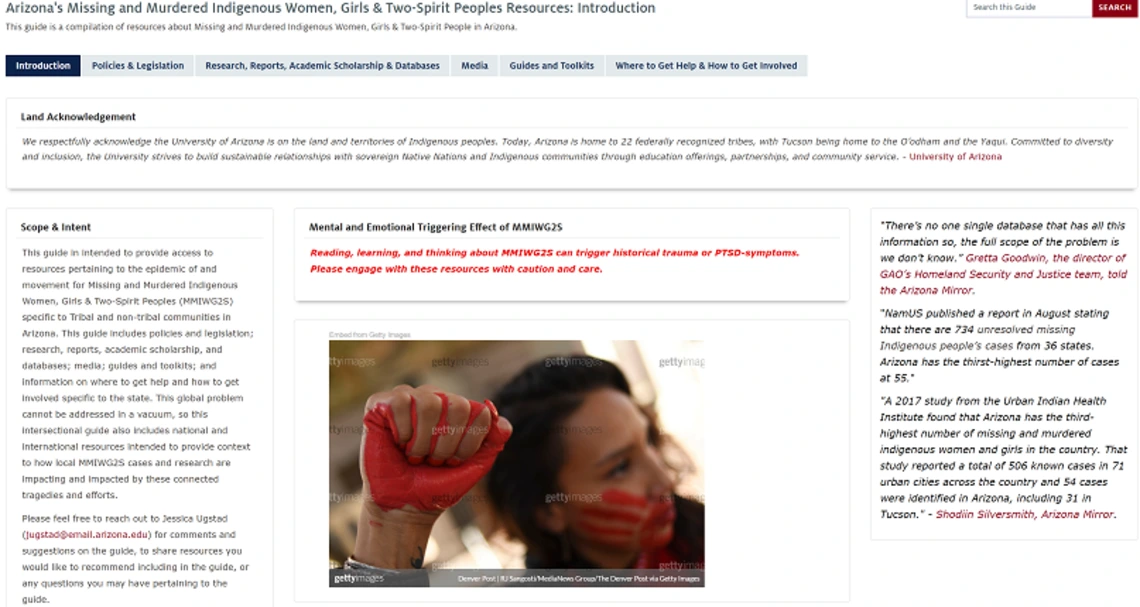The Epidemic of Missing and Murdered Indigenous Women, Girls & Two-Spirit Peoples

Human Rights Practice MA student Jessica Ugstad, who is also a Collection Management Librarian, Daniel F. Cracchiolo Law Library at the University of Arizona, recently developed a new library guide focusing on "Arizona's Missing and Murdered Indigenous Women, Girls & Two-Spirit Peoples Resources." Jessica also wrote about a blogpost about the issue:
"According to the Missing and Murdered Indigenous People Unit (MMU), U.S. Department of the Interior, Bureau of Indian Affairs, “American Indian and Alaska Native people are at a disproportionate risk of experiencing violence, murder, or going missing and make up a significant portion of the missing and murdered cases.” It is because of the recognition of the epidemic at a federal level, as well as the prior work done by Operation Lady Justice, the Presidential Task Force on Missing and Murdered American Indians and Alaskan Natives, that Secretary Deb Haaland, New Mexico congresswoman and the U.S.’s first Indigenous cabinet secretary, called for the formation of the MMU.
"According to Annita Lucchesi and Abigail Echo-Hawk’s, 2018 report Missing and Murdered Indigenous Women & Girls: A Snapshot of Data from 71 Urban Cities in the United States, Arizona is ranked 3rd highest number of MMIWG2S in the United States. According to their research, Arizona had 54 cases while Tucson alone had 31 cases of MMIWG2S making it the 4th highest ranked city in the United States, most violent acts occurring between 2010-2018. While these numbers are staggering, Luccchesi and Echo-Hawk pointed out that these figures were not representative of the true magnitude of the epidemic. They identified two distinct challenges to obtaining accurate information on these crimes: racial misclassification of victims and records being misentered, or not entered at all, into local, national, and/or federal law enforcement agency databases across the United States. The authors also identified media bias, misrepresentation, and lack of reporting as contributing to a lack of public awareness of the problem. The combined effect of all of these contributing factors had essentially impeded the ability for local and tribal communities, and local, state, and federal governments and law enforcement agencies “to make informed decisions on how best to address this violence.”
You can read the full blogpost and also access the library guide.

